Strong M6.1 solar flare erupts from Region 3615
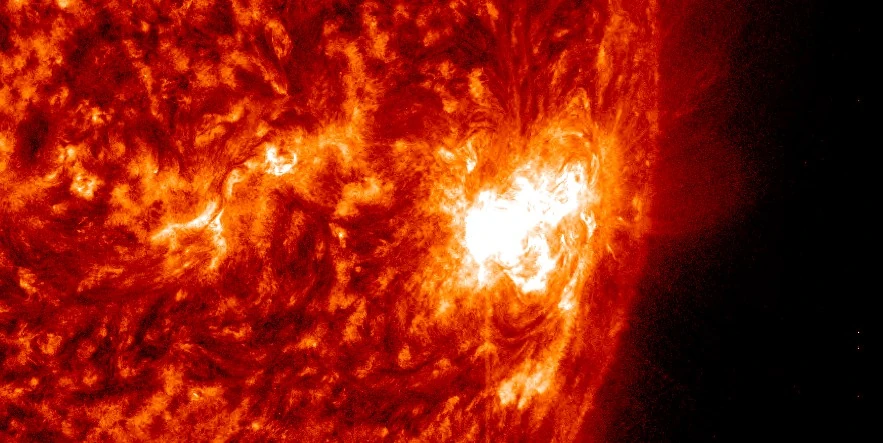
A strong solar flare measuring M6.1 erupted from Active Region 3615 (beta-gamma-delta) at 15:56 UTC on March 28, 2024. The event started at 15:40 and ended at 16:03 UTC. This is the second M6+ solar flare of the day after M7.1 at 06:29 UTC.
There were no radio emissions that would suggest a coronal mass ejection (CME) was produced. Even if it was, the location of this region does not favor Earth-directed CMEs. However, with this region now being close to the western limb, there’s an increased chance of solar radiation storms over the next 2 or 3 days.
Sunspots, particularly when positioned near the Sun’s western limb, such as AR 3615 currently is, have a significant capacity to produce solar radiation storms. This phenomenon is attributed to the magnetic linkage between these sunspots and the Earth through the Parker Spiral model. The Parker Spiral, a concept named after its discoverer — solar physicist Eugene Parker, illustrates the structured pattern of the solar wind in the heliosphere, including its magnetic field lines that extend from the Sun to the outer reaches of the solar system.
When solar flares occur near the western limb, they can accelerate protons to high velocities. These protons, once accelerated, follow the magnetic field lines of the Parker Spiral directly toward Earth.
Such storms can have profound impacts on Earth’s magnetosphere, affecting satellite operations, radio communications, and even posing risks to passengers and crew in high-flying aircraft at high latitudes as well as astronauts in space. According to the NOAA Space Weather Prediction Center, when energetic protons collide with satellites or humans in space, they can penetrate deep into the object that they collide with and cause damage to electronic circuits or biological DNA.
S5 – Extreme solar radiation storms (the strongest; which happen with an average frequency of less than 1 per 11-year solar cycle) can render satellites useless. Memory disruptions may lead to a loss of control over the satellite, while the influx of radiation noise can degrade the quality of image data, rendering it unreliable. Additionally, star trackers, essential for determining a satellite’s orientation by locating specific celestial sources, may fail to perform accurately. There is also a risk of permanent damage to solar panels, which are crucial for providing power to the satellite.
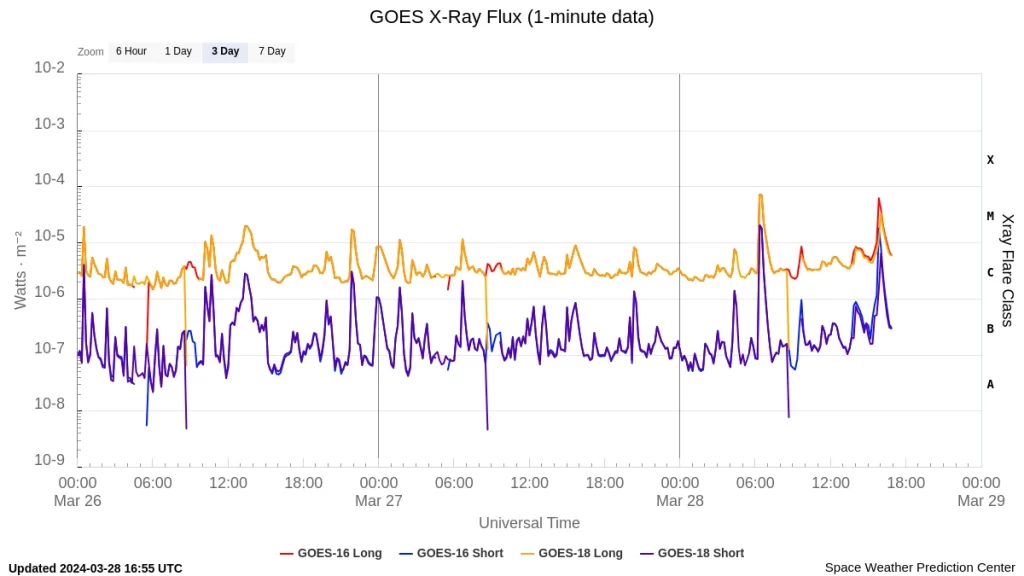
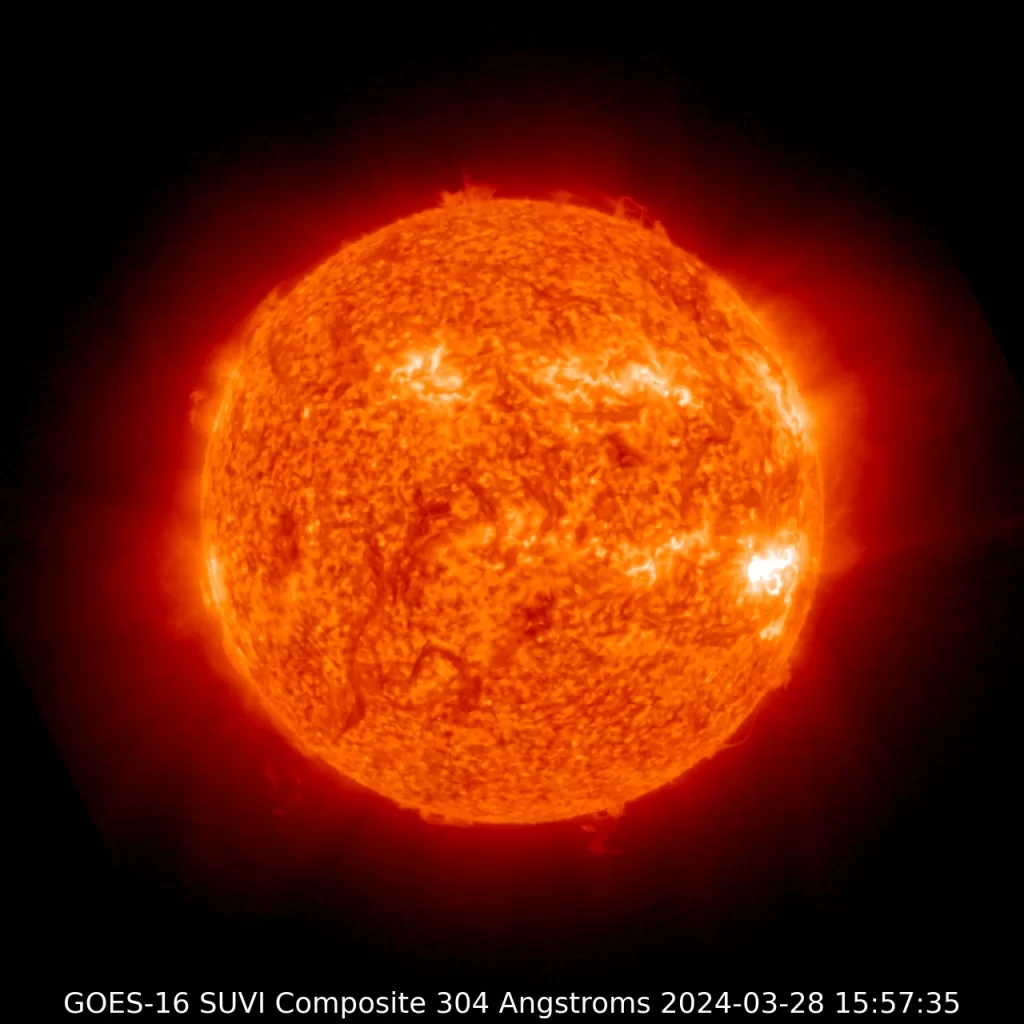
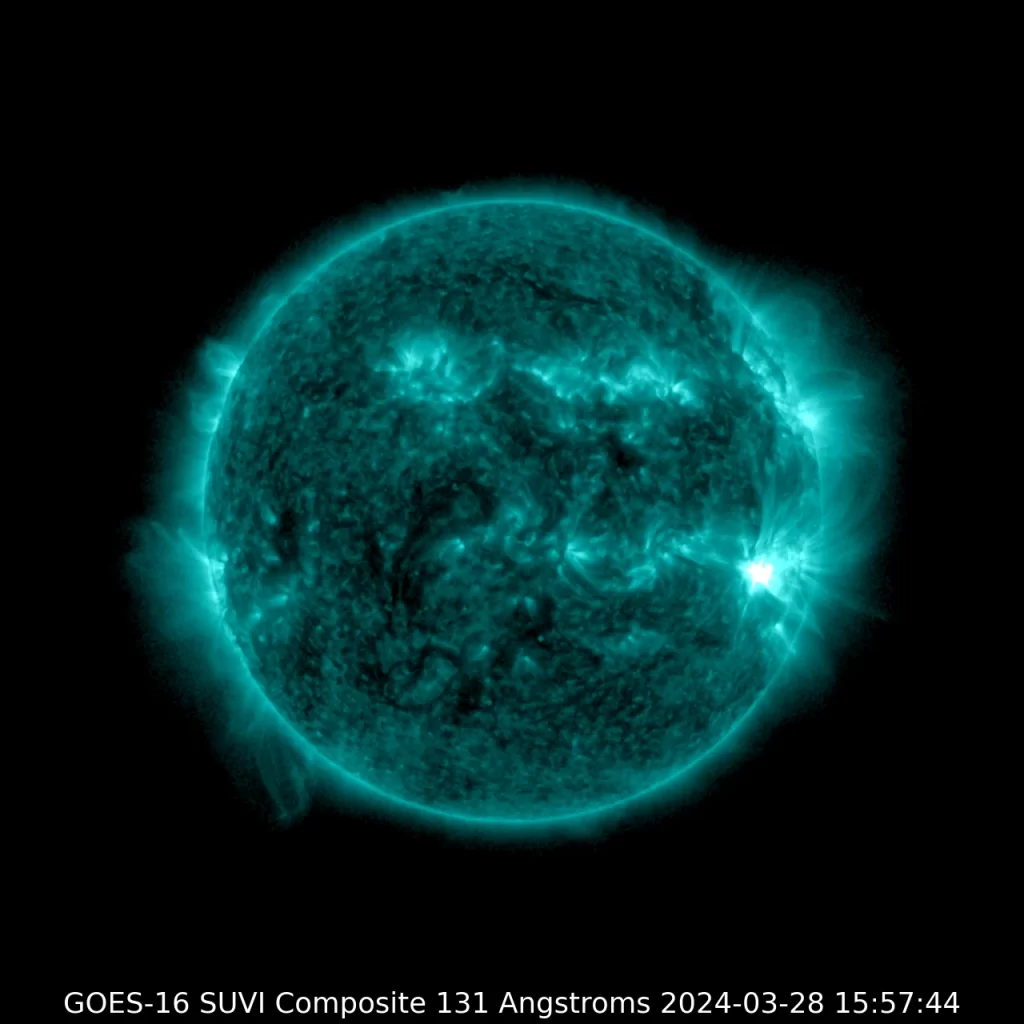
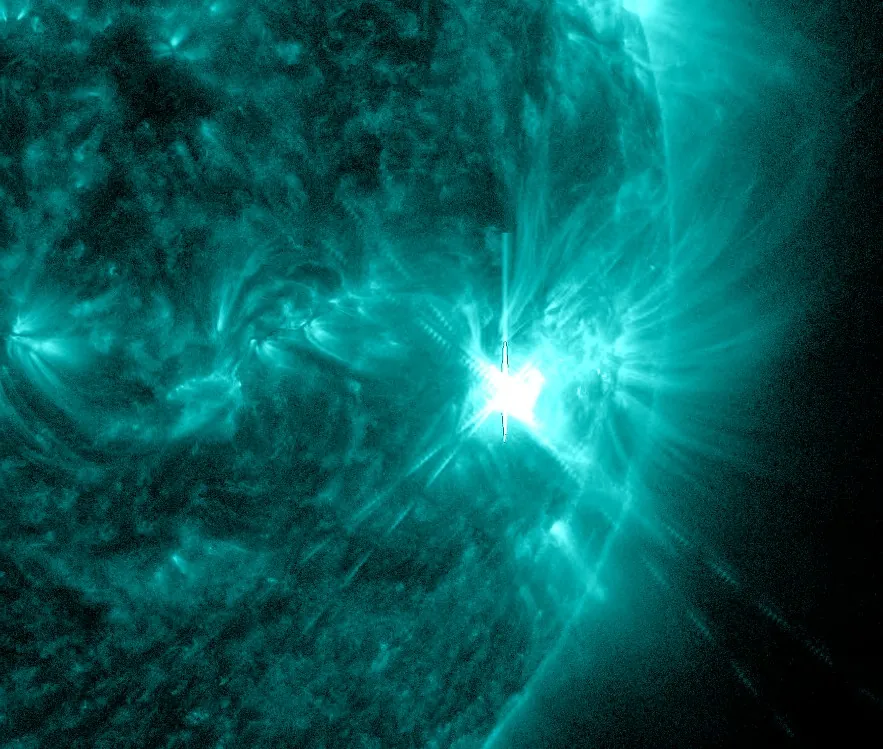
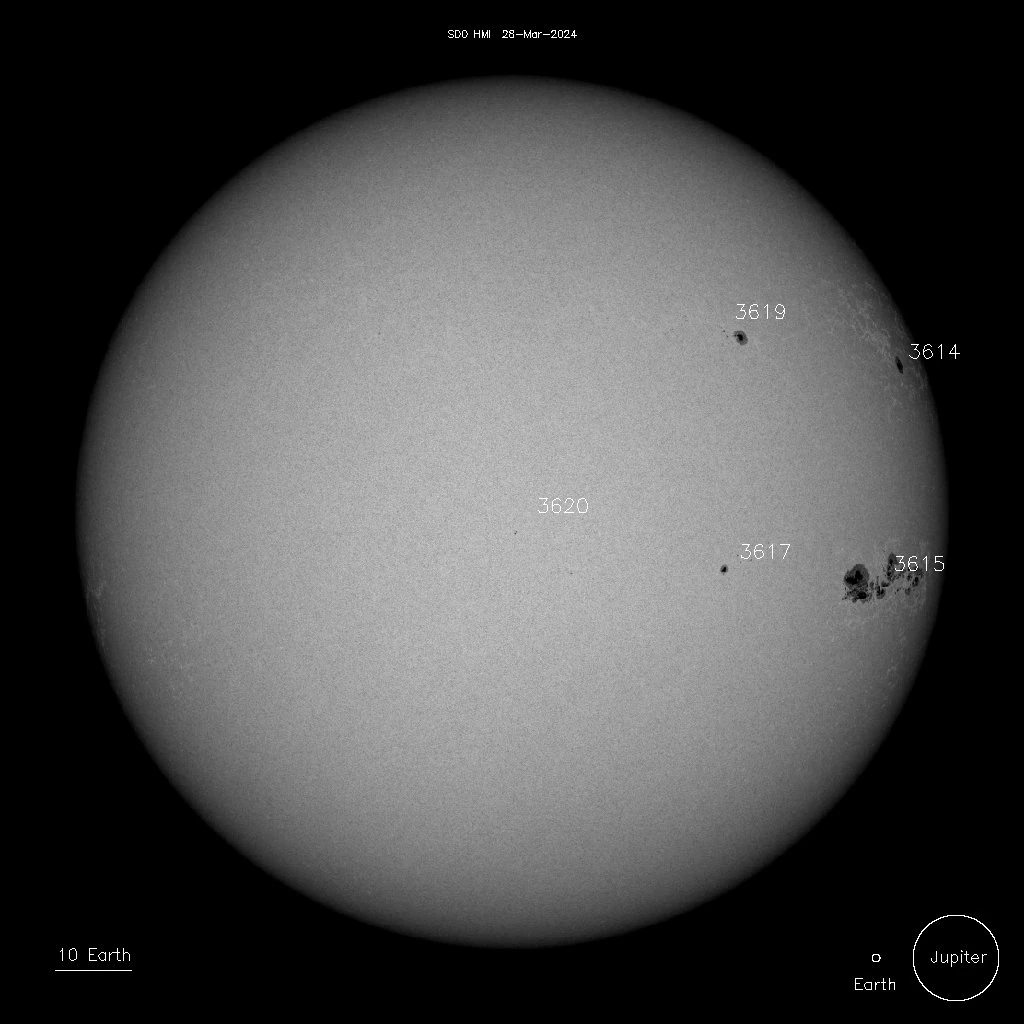
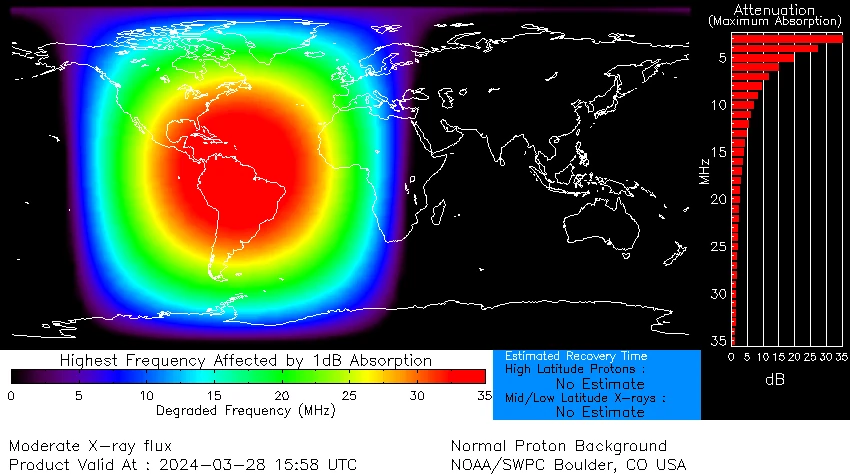
Radio frequencies were most degraded over the SE United States, Central America, South America, the Atlantic Ocean, and the eastern Pacific at the time of today’s M6.1 flare.
Solar activity is expected to continue at moderate to high levels through March 29, with a chance for an X-class flare (25%), primarily due to the flare potential of Region 3615. Probabilities decrease to just a chance for M-class flares on March 30 as AR 3615 rotates beyond the western limb.
A chance for S1 – Minor solar radiation storms will persist through March 29 primarily due to the potential and location of AR 3615. Probabilities for an event decrease to just a slight chance on March 30 as AR 3615 rotates beyond the western limb. There is a chance for the greater than 2 MeV electron flux to reach high levels beginning on March 28.
Solar wind parameters over the past 36 hours reflected the waning influence of a CME that left the Sun on March 23 and ambient-like solar wind conditions are expected to return by late March 28. Slightly elevated parameters are possible again by late March 29 under weak, negative polarity coronal hole high speed stream (CH HSS) influences, which will continue through March 30.
The geomagnetic field is at quiet levels and is expected to be at quiet to unsettled levels on March 29 and 30 due to the aforementioned negative polarity CH HSS.
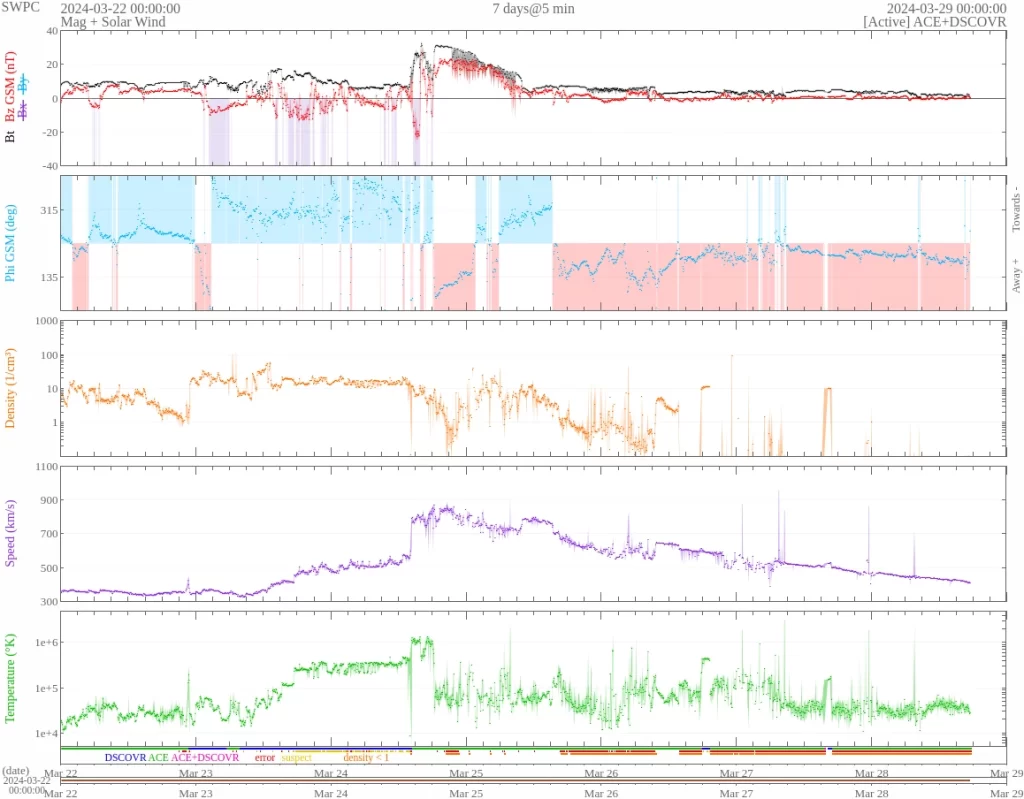
References:
1 Forecast Discussion – Issued: 2024 Mar 28 1230 UTC – Prepared by the U.S. Dept. of Commerce, NOAA, Space Weather Prediction Center
Featured image credit: M6.1 solar flare on March 28, 2024. Credit: NASA SDO/AIA 304, Helioviewer, The Watchers

Commenting rules and guidelines
We value the thoughts and opinions of our readers and welcome healthy discussions on our website. In order to maintain a respectful and positive community, we ask that all commenters follow these rules.